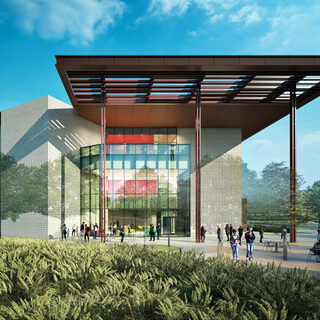Western Colorado University Begins Construction on Rady School of Computer Science and Engineering
Western Colorado University began construction in September of 2018 on the 75,000-sf Rady School of Computer Science and Engineering in Gunnison. Created in partnership with the University of Colorado and funded by a donation of $80 million, the facility will provide sophisticated instrumentation suites, laboratories, classrooms, lecture halls, collaboration spaces, faculty offices, and a central gallery with a canted glass curtainwall. Farnsworth Group is providing architectural, MEP, structural, and landscape design services.










